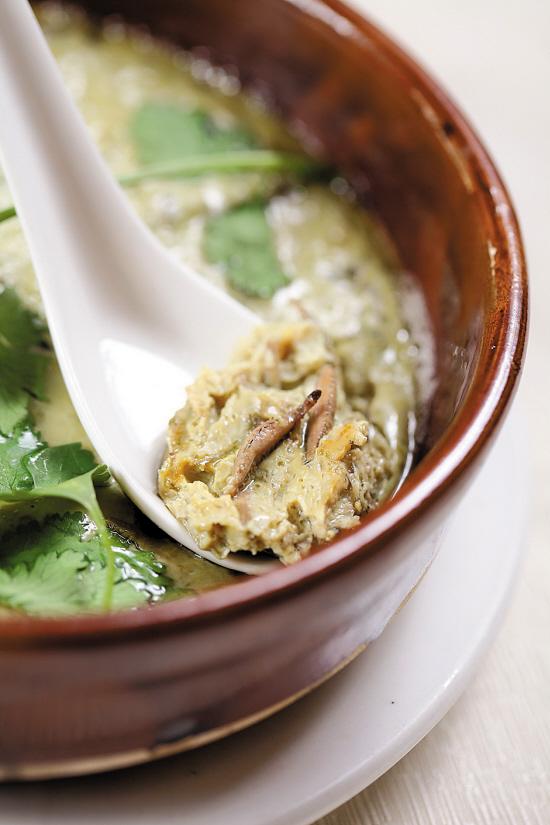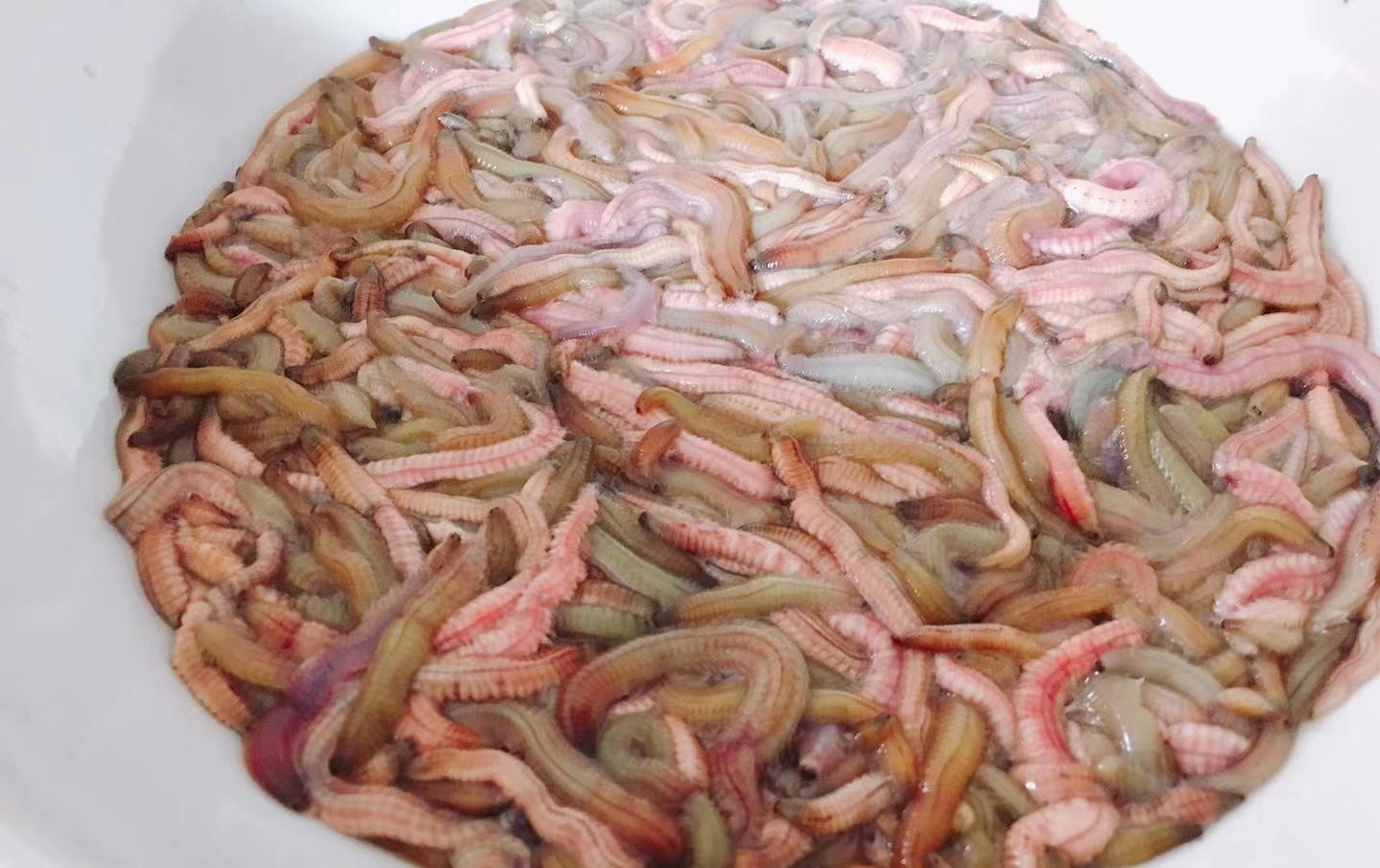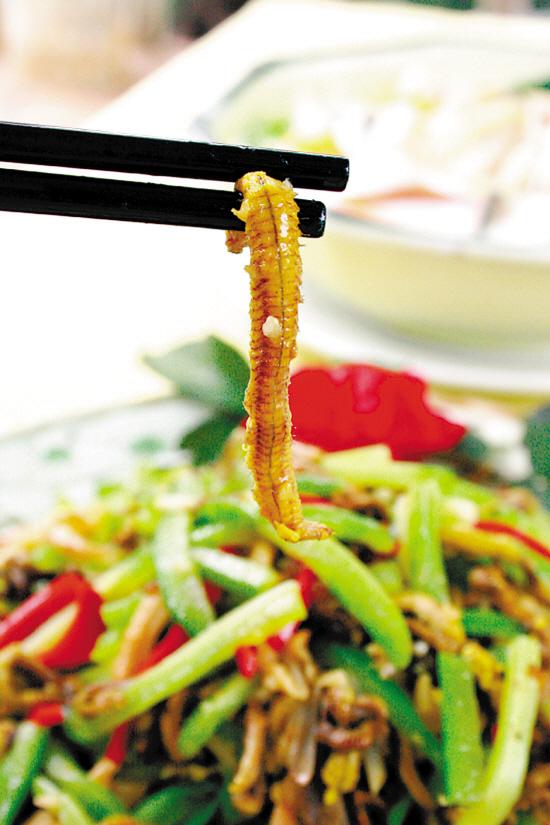
【食尚岭南】Seasonal delicacy Hechong: aroma beyond compare
当造禾虫:物之香,天下无双

秋风起,禾虫美。老广们此时一定会开车直扑中山、东莞、南海、番禺、斗门等地,只为觅来禾虫,解肚中馋虫。这种“异型”食材,土著老广嗜之如命,甚至还有诗人专门为它写诗,称此物之香,天下无双。但外地人多半一见真身就面如土色,不敢下箸。然而,食过禾虫的人都纷纷对其鲜美一试难忘,更有甚者到达痴迷的地步。
Hechong ("Tylorrhynchus heterochaeta") is an edible marine worm widely distributed in the estuary area. As the autumn breeze sets in, the allure of Hechong captivates the locals of Guangdong. They embark on journeys to Zhongshan, Dongguan, Nanhai, Panyu, and Doumen, in search of these extraordinary delicacies that satisfy their gastronomic desires. Revered as a "strange" ingredient, the indigenous people of Guangdong hold it dear to their hearts, with poets even penning verses to extol its unrivaled aroma. Yet, outsiders often turn pale at the sight of its true form, hesitant to partake. However, those who have tasted Hechongs find their exquisite taste unforgettable, some even becoming obsessed.

生焗钵仔禾虫
禾虫有极强的季节性,每年农历三四月和八九月才会大量出现,故以“造”论之。捕捞到禾虫的最早时间,在农历三月,时值黄瓜上市,称“黄瓜虫”。四月正当荔枝扬花结果期,所以称为“荔枝虫”。而到农历八九月产出的禾虫分别叫作“秋分虫”“禾花虫”,这两个月禾虫不但数量多,而且皮薄、浆多、个头大,是禾虫的极品。
With strong seasonality, Hechongs appear abundantly only during the third and fourth lunar months and the eighth and ninth lunar months. Thus, they are referred to as "seasonal" delicacies. The earliest time for Hechong catching is the third lunar month, which coincides with the cucumber season, thus they are known as "cucumber Hechong". In the fourth lunar month, when lychees bloom and bear fruit, they are called "lychee Hechong". When it comes to the best season for Hechong in the eighth and ninth lunar months, they are known as "autumn Hechong" and "rice flower Hechong", respectively. During these two months, the Hechong variety of fruit is abundant and showcases desirable characteristics such as thin skin, ample pulp, and larger sizes, setting the best standard for its category.
禾虫虽然样子狰狞,但其实极为“娇弱”,但凡水质有污染,都难以存活,因此产量并不高。捉禾虫是门技术活。要想逮禾虫,需选当造之月的农历初一和十五,也就是潮涨的日子,禾虫会随着潮水密密麻麻地浮游水面,待潮落时,它们便会随之流出禾田。
Despite their fierce appearance, Hechongs are quite delicate. They hardly survive in polluted water, resulting in relatively low production. Catching these little worms requires a skilled endeavor. One must choose the first and fifteenth days of the season, which coincide with the high tide when Hechongs float densely along the water surface with the tide and flow out of the paddy fields when the tide recedes.

有一种特殊的工具,叫“禾虫萝”。“禾虫萝”网眼细密,大端口叫“萝头”,小端口叫“萝尾”。禾虫会随着潮水从萝头漂流进萝里,被装入萝尾后就跑不掉了。
A specialized tool, known as a "Hechong net", is used to capture Hechongs in aquatic environments. The net is designed with fine meshes, featuring a larger opening called the "head" ("萝头") and a smaller one called the "tail" ("萝尾"). As the tide flows in, the worms enter the net through the head and get trapped in the tail, making it impossible for them to escape.

在粤地,禾虫的做法最为多样,焗、煎、炒、蒸、煮等做法样样皆可,其历史可追溯到明清两代,像“钵仔生焗禾虫”“禾虫焗蛋”“生炒禾虫”“禾虫煲莲藕眉豆汤”等,更是珠三角人家耳熟能详的家常菜。最为食家所推崇的是“钵仔焗禾虫”,因为最能吃出禾虫甘香丰腴的滋味。禾虫在生焗前,需把它们放入花生油里,等它们“喝”足油后,身体会自动裂开爆浆。这时加陈皮丝生焗,会形成如同蛋浆一样的黄色厚浆,遇热凝结后,变得如同蒸蛋一般,入口鲜美丰腴。
In Guangdong, Hechongs are prepared in various ways, including braising, frying, stir-frying, steaming, and boiling. Its culinary history can be traced back to the Ming and Qing dynasties. Dishes such as "bowl-braised Hechong", "Hechong braised with eggs", "stir-fried Hechong" and "Hechong with lotus root and white bean soup" are well-known household favorites in the Pearl River Delta. The most esteemed among gastronomes is the " bowl-braised Hechong", as it best brings out the succulent and flavorful essence of Hechong. Before braising, the worms are soaked in peanut oil until they "drink" their fill, causing their bodies to burst. When braised with Chenpi, it forms a thick and yellowish custard-like mixture. Upon heating, it solidifies like a steamed egg and delivers a delectable and rich taste when savored.
-
Photos|Foshan witnesses peak battle of 900 dragon boat rowers
2023-11-26 22:56:35 -
Guangzhou ranks among China's most livable cities for the sixth time
2023-11-26 22:56:45 -
Foshan hosts inaugural Camping Life Expo
2023-11-25 23:51:05 -
From Macao to Beijing, a 71-day journey by bus
2023-11-25 23:51:18






